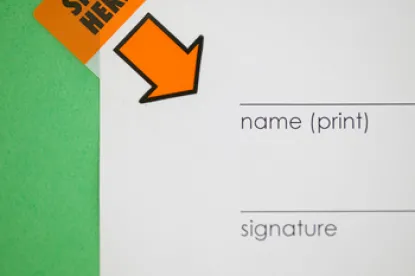An office of Economic Policy Report published in March 2016, entitled “Non-Compete Contracts: Economic Effects and Policy Implications,” estimates that 18% of all workers, or nearly 30 million people, are covered by non-compete agreements. The Treasury Department is concerned that the prevalence of these agreements raises important questions about worker welfare, job mobility, business dynamics, and economic growth more.
Here are the conclusions reached by the Treasury Department report:
Non-compete agreements have social bene ts in some situations.
- Non-competes are sometimes used to protect trade secrets, which can promote innovation.
- By reducing the probability of worker exit, non-competes may increase employer incentives to provide costly training.
- Employers with especially high turnover costs could use non-competes to match with workers who have a low desire to switch jobs in the future.
But non-compete agreements can also impose large costs on workers.
- Worker bargaining power is reduced after a non-compete is signed, possibly leading to lower wages.
- Non-competes sometimes induce workers to leave their occupations entirely, foregoing accumulated training andexperience in their fields.
- Reduced job churn caused by non-competes is itself a concern for the U.S. economy. Job churn helps to raise labor productivity by achieving a better matching of workers and rms, and may facilitate the development of industrial clusters like Silicon Valley.
Moreover, there is reason to believe that many specific instances of non-compete agreements are less likely to produce social benefits.
- Non-competes are often used by employers in non-transparent ways:
- Many workers do not realize when they accept a job that they have signed a non-compete, or they do not understand its implications.
- Many workers are asked to sign a non-compete only after accepting a job offer. One estimate is that 37% of workers are in this position.
- Many rms ask workers to sign non-competes that are entirely or partly enforceable in certain jurisdictions, suggesting that rms may be relying on a lack of worker knowledge despite the fact that, with limited exceptions, non-competes are not enforced in that state.Only 24% of workers report that they possess trade secrets. Moreover, less than half of workers who have non-competes also report possessing trade secrets, suggesting that trade secrets cannot explain the majority of non-compete activity.
- Non-competes are common among workers who report lower rates of trade secret possession: 15% of workers without a four-year college degree are subject to non-competes, and 14% of workers earning less than $40,000 have non-competes. This is true even though workers without four-year degrees are half as likely to possess trade secrets as those with four-year degrees, and workers earning less than $40,000 possess trade secrets at less than half of the rate of their higher-earning counterparts.
- Available evidence suggests that workers with a low initial desire to switch jobs are not more likely to match with employers who require non-competes.
- In some cases, non-competes prevent workers from nding new employment even after being red without cause; in such cases, it is difficult to believe that non-competes yield social benefits.
States vary greatly in the manner and degree to which they will enforce non-competes.
- In some states, non-compete enforcement is determined by statute, while in others it is determined exclusively by case law.
- Some states refuse to enforce non-competes,or refuse to enforce non-competes that contain any unenforceable provisions (“red-pencil”doctrine),although a majority of states will modify overbroad non-compete contracts to render them enforceable (“blue-pencil” and “equitable reform” doctrines).
The report suggests several broad recommendations that would minimize the harms associated with non-compete agreements.
- Increase transparency in the offering of non-competes.
- Encourage employers to use enforceable non-compete contracts.
- Require that rms provide “consideration” to workers bound by non-compete contracts in exchange for both signing and abiding by non-competes.
TAKE-AWAYS:
-
Non-competition agreements are supportable from a public policy standpoint if they are reasonably drawn to: a) protect trade secrets; b) protect customer- specific information and relationships; and/or c) promote worker training/protect the employer’s investment in the training provided.
-
Legislative proposals to curtail the use of non-competition agreements are more and more frequent. Employer abusive use of these agreements may put them in jeopardy.
-
Companies have legitimate business interests at stake in having enforceable non-competition agreements, but those same companies have a legitimate business interest in hiring employees who are dissatis ed with working for a competitor.
-
Companies should take a balanced and thoughtful approach to requiring non-competition,non-solicitation and/or con dentiality agreements. The same level of restriction should not apply to all employees.
-
Employers should be more transparent with applicants and employees in explaining the need for whatever restrictive agreements the Company may require.




 />i
/>i

